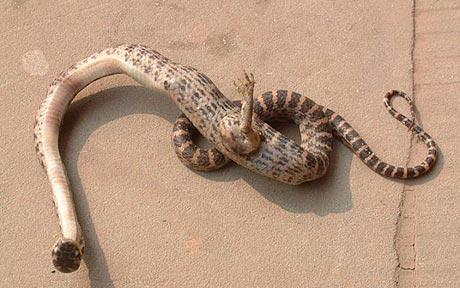Look at the interesting snake found in China — it's got a leg.

How can this happen? Genes are pleiotropic — they tend to have lots of different functions. The genes involved in making a limb are also expressed in other places; for instance, the Hox genes that specify identity along the length of the body are also reused in specifying identity along the length of the limb. What that means is that when the snake evolved limblessness, it didn't do so by simply throwing away a collection of leg genes — it couldn't, not without also destroying genes that functioned in generating its body plan. Instead, it evolved genes or modified the regulation of genes to actively suppress limb development…but the genes to build a limb are still in the genome, and still functional, and still actively working in other ways.
What most likely happened here is that some environmental agent suppressed the suppressor, allowing the old developmental program for a limb to be re-expressed. The retention of such programs is, of course, evidence that this animal evolved from limbed ancestors.
It would be interesting to know what triggered this change. It's not likely to be genetic (the asymmetry suggests that), but is probably a consequence of some pollutants that disrupt development. It's not a good sign, anyway.
Some good suggestions from the comments: it may not even be a teratogenic deformity. It could just be a poor lizard that punched a claw through the abdominal wall as it was being digested, and the snake was briefly trundling about in pain from the injury.
We need to do a dissection!
- Log in to post comments
